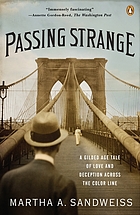My friend Molly is in the process of writing a book about parenting-while-feminist and in our little writing group, #firstthedraft, we've been talking about the politics of "babywearing" (carrying your infant and/or small child in a backpack or sling, etc.) versus strollers. My parents generally used packs -- front and back -- in the mid-80s when I was small, as well as wagons, tricycles, car seats, and various bike attachments, to tote us around. I don't remember that we ever had a stroller per-se, but then we also lived in a small enough town that for daily getting around a car was essential and strollers were thus less so. But I do remember using strollers as a childcare provider in my teens, as a way to move toddlers I physically couldn't carry over distances of more than a city block or two (about the distance they had the stamina to walk on their own). I never thought of child transport options as very political in nature.
Here in the city, though, I've learned, strollers are a Big Deal. Everyone has Feelings about them: how big they should (or shouldn't) be, where they should (and shouldn't) be allowed to travel, when (if ever) they are reasonable to be on public transportation. Parents and non-parents alike take all sides and sometimes blood is shed (or at the very least ill-will is fostered).
Last week, I suggested on Twitter that the whole problem might be solved if only we could create little steampunk baby carriers that were balloon or propeller-powered and could hover at about 7-8 feet from the ground. The caregiver could then walk along tugging the carrier along on a tether and strollers would take up the sidewalks and/or precious room on the T no more!
| still from The Red Balloon (via) |
I actually think identifying this social rough-and-tumble as one about strollers and parenting choices says something about how we, as a society, compartmentalize parents and their (especially wee) children into the category of Other, a group of people who enter the public realm on sufferance from the rest of us -- those of us who, we like to believe, only take up an "appropriate" amount of space on the T, on the sidewalk, who move at the right speed from point A to point B, and are able to time our inconvenient errands for those times when, even if we do take up more space then usual, we will somehow magically not slow down, crowd out, or inadvertently invade the personal space of our fellow city dwellers.
Those of us, in other words, who assume we have a right to be in public space when and how we need to ... as opposed to those Other folks whose right to the public square only extend as far as their ability to imitate the space-taking habits of the default citizen (Us).
So what I want to talk a little bit about in this post is how, in an urban environment, especially if you do not own a car and/or are trying to get by using it a little as possible, you're just going to get in peoples' way. Even if you don't have dependents to transport. Even if you don't have serious mobility issues that require extra gear (walker, cane, chairAnd errands are going to take a lot of effort to complete. And chances are you're going to need some sort of wheeled conveyance to get them done -- unless you're lucky enough that you don't have a bad back or a bum wrist or weak ankle and can afford a gym membership and the time to bench press on a regular basis.
Errands in the city take much more time and planning, in my experience, than they did in the car-dependent town where I grew up (or perhaps, I should clarify, much more than they did for me and my car-owning family; for the folks in my hometown too poor to own a car, life was further complicated by a crappy-to-nonexistent public transit system). It's something I've had to get used to, as a former smaller-town dweller turned urbanite. And I think perhaps this helps me see more clearly the similarities across types of transport-aides that some other people don't -- because we're so used to tuning our brainwaves to "judge" when parents-and-children come into view.
 |
| Hanna and I finally bought this shopping cart this year |
Setting aside, for a moment, the privilege of having a job with a) an hour-long lunch break, and b) the ability to leave on an errand and not worry about getting in trouble if the subway is delayed and I get back a bit late, this sounds like a relatively easy transaction. Take a late lunch, go down, pick up veggies, return to work, take veggies home at the end of the day. If I were living in my home town, this errand would have taken about twenty minutes, maybe, leaving 40 minutes at either end to actually eat lunch.
In Boston, this errand means the following:
1. Remember to take the wheelie-cart with me to work (which means dragging it along on our morning walk of approximately three miles) so that I will be able to transport the heavy winter vegetables on my own.
2. At 2pm, walk to the closest T stop and wait for a train that will take me the right number of stops from Hynes Convention Center to Haymarket (approx. 10 minutes)
3. Maneuver the empty cart into the T, off the T, and up the escalator at Haymarket, and two blocks to the drop point (approx. 15 minutes).
4. Transfer the vegetables from the back of the delivery truck into the cart (approx. 5 minutes).
5. Stop at a nearby sandwich shop for a sandwich and iced tea -- admittedly an "optional" step, though to go without would have meant foregoing a midday meal; as it was, I didn't have time to actually eat the sandwich until I was walking home that evening (approx 10-15 minutes).
6. Carry the cart, maybe 45 pounds fully loaded, down the stairs to Haymarket station; they have an elevator but I didn't have time to locate it; the elevators to below-ground stops are often poorly marked. The escalators go up, but not down.
7. The first T to pull into the station was headed in the right direction, but not to the appropriate stop. I got on anyway, since I was now starting to feel anxious about getting back to work roughly on time. In order to board the train, I had to lift the cart up the stairs and maneuver it around the other passengers to a quasi-secure "parking" spot midway down the car.
8. At Copley Square I had to transfer trains, meaning I needed to maneuver around standing passengers carrying the laden cart down to the platform, and then repeat the process boarding the train again. All of these situations were made comparatively easy by a) the fact I'm physically able to lift the loaded cart for short bursts of time, b) I was traveling mid-afternoon instead of rush hour, c) I wasn't getting hate-stares from people who automatically resent the presence of strollers in the subway. (steps 6-8 took maybe 20 minutes).
9. At Hynes, I had to disembark and haul the cart up three flights of stairs (only one of which is equipped with an up escalator) to street level, and then wheel the cart from the station to the MHS. (5 minutes)
10. At the end of the work day, I knew that rush hour on the T precluded trying to get my shopping cart on the T unless I wanted to wait for 45 minutes to an hour for any train empty enough to accommodate me. Since I am able to walk, and didn't have to rush home for any reason, I walked home -- a distance of about 3 miles -- pushing the cart ahead of me.
This is the labor it takes to do one errand in the city when you're relying on public transportation and your own two feet. I'm not writing this post in a bid for folks to pity me -- we made the decision to subscribe to the CSA this winter, after all, knowing the time and effort it would take to get our fresh veggies. But I do hope that focusing in on the logistics of one errand this way points out how most of us, at one time or another, even if we are able-bodied adults sans children moving around our environment, are awkward to accommodate. And also point out how the environment is as much "at fault" as the awkward human being in question.
Rather than bitching about those of us who crowd the sidewalk with shopping carts, strollers, or walkers, we might think about the assumptions that led to sidewalks being a certain width (i.e. that all those who use the sidewalk are people who can walk unaided and unburdened with goods). While some of us might be able to carry our children (or our groceries) in wraps or packs or tote bags, others may not be strong enough to carry 45 pounds of produce (or exhausted toddler) for three miles -- or time our outings before/after rush hour in order to actually fit on the T without the other passengers complaining or resenting you.
More and more, I find myself thinking about how the ideal citizen-worker in our world these days is the perfectly-able young adult without any dependents, who never gets ill, and is somehow (magically) perfectly self-sufficient. Not only do they never behave awkwardly in public, take up more space than we think they should, turn up their music louder than we'd like, lose their train of thought in the grocery aisle, or fumble with their wallet at the cash register ... they manage their bodies (and those of their children) and personal belongings so that the rest of us can imagine they are not there.
Oh, I've been there. I've been annoyed and judgy and exhausted and angry and in the headspace where I just want to get home and not deal with one more stranger ever anywhere. But that's just not the way the world works. We're all awkward, noisy, thoughtless, slow. We all take up more space, sometimes, than others think we should.
And it seems like an important exercise or practice for each of us to -- regardless of how we feel and what we think of others' choices and presence -- realize that they're probably just trying to get around the city like we are, and that sometimes getting from point A to B is an awkward, clumsy process. One that does, in fact, take up space in the world.
And that we all, in fact, equally entitled to be mobile, and to move around the city when and how we need to in order to live our lives.







































